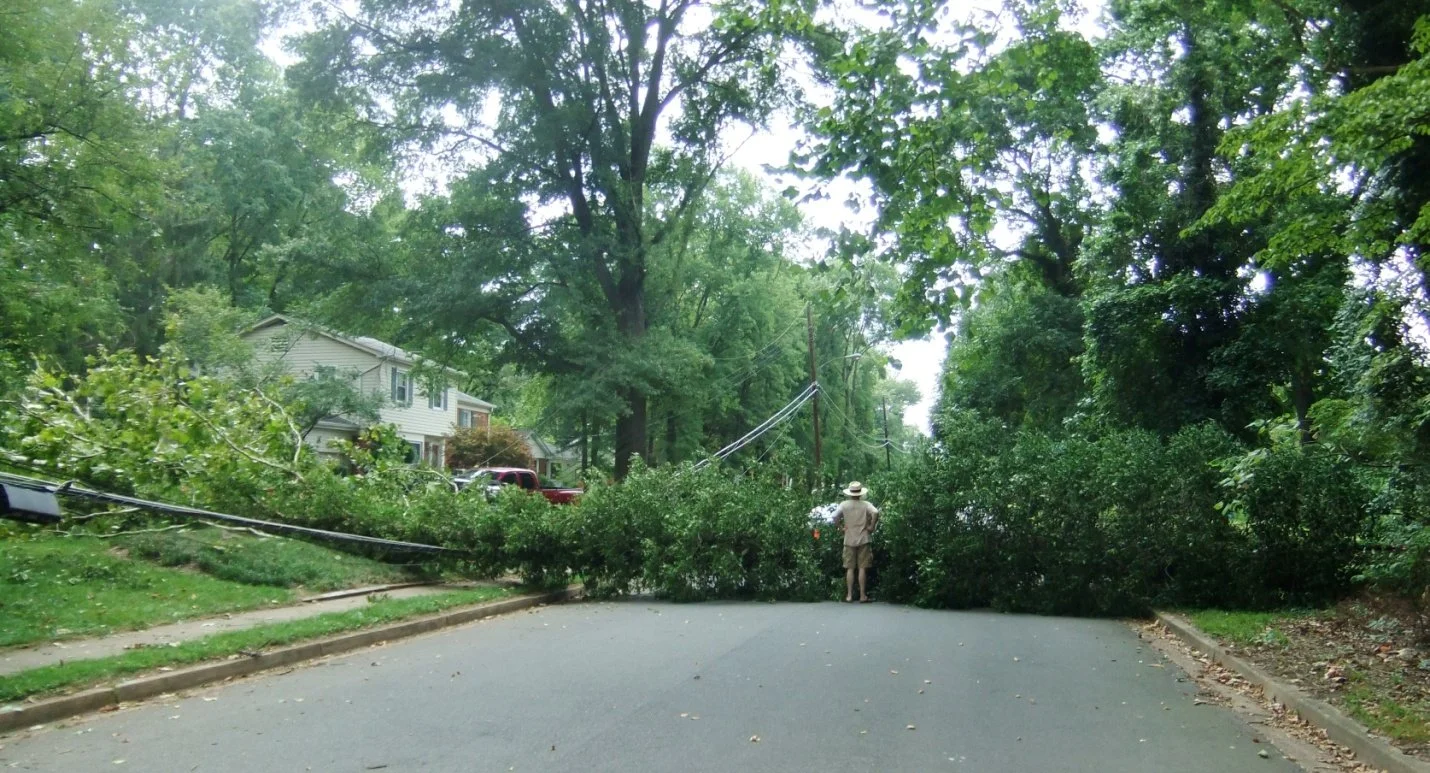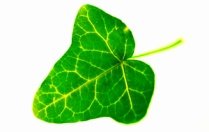Photo: Betsy Martin
Betsy Martin
One hot August night several years ago, a Sycamore tree fell across the street a block from my house. It took out a pole as well as power, telephone, and cable lines. The street was blocked for a day, and many residents were without power for hours. For some residents, it was days before their services were restored.
Fallen Sycamore, Betsy Martin
Luckily, the tree was relatively young (about 40 years old, according to the tree service) and had not reached its mature size, so it did not fall on a house across the street in which four young children and their mother were sleeping. Because it was late at night, the streets were empty and no one was hurt by the falling tree or the downed power lines.
The tree was not dead or diseased. There was no storm or big wind. According to employees of the tree service, the tree was brought down by the weight of English ivy that had grown almost to the top of the tree. (You can see it in the photo above.)
English ivy destroys trees and creates hazards. Its weight can bring a tree down, as happened in this case. In a storm, the ivy acts as a sail to uproot a tree, and ivy becomes even heavier with water trapped in its dense foliage. Ivy also traps moisture next to the tree’s trunk, and causes disease which creates habitat conducive to rats, and the spread of West Nile virus. It then displaces native plants that benefit wildlife, and creates a food desert—native insects cannot eat it and so birds cannot find caterpillars to feed their young in a forest smothered by ivy.
Ivy is an invasive exotic species that destroys trees and natural habitat.
Please, do not allow English ivy to grow up trees on your property, and if it has done so, take steps to remove it. (See below for guidance on removing ivy from trees.) The beauty of the numerous mature trees in our Northern Virginia neighborhoods depends on your interest in taking care of them.
Preventing ivy from growing up your trees is probably the single most important thing you can do to keep trees healthy—and safe.
If you’re concerned about ivy growing up your trees, first be sure it’s English ivy. Ivy is evergreen (stays green all winter) and has distinctive three-lobed leaves like this:
English Ivy leaf
Removing ivy from trees is simpler than you might think. You can get rid of the ivy in three fairly easy steps:
With big loppers, cut the ivy stems that are growing up the tree trunk. Cut them near the ground. For very thick stems, it may take a hand saw. Be careful not to damage the tree or its bark with the saw.
Next, cut the ivy stems about three feet above the ground. Make sure to cut all the ivy stems—don’t leave any growing up between the ground and the second set of cuts you’ve made.
The last step is to wait. The ivy will die, turn brown, and eventually fall from the tree. Don’t try to pull the ivy down—that is a lot of work, and can be harmful to the tree and dangerous to you, especially if you’re dealing with a large mass of ivy.
Eliminating ivy from around trees is the most helpful action you can take, because even if it is removed from trees, a stand of ivy near trees will eventually grow up. Ivy needs to grow vertically to set seed, and when it does, birds eat the berries and spread new ivy plants far and wide.
In addition to liberating your own mature trees from English ivy and other invasive vines, please consider joining up with other Tree Rescuers as part of the Plant NOVA Trees campaign. (The Tree Rescuers link has lots of good information about what to do about invasive vines, and how you can help your neighborhood preserve its trees.)
So much depends on the preservation of our native tree canopy. Native trees clean the air and water, store carbon, create shade that mitigates intensifying heat, beautify our yards and neighborhoods, and provide critical habitat for birds and other wildlife. It is at least as important to save the native trees we have as to plant new ones.



